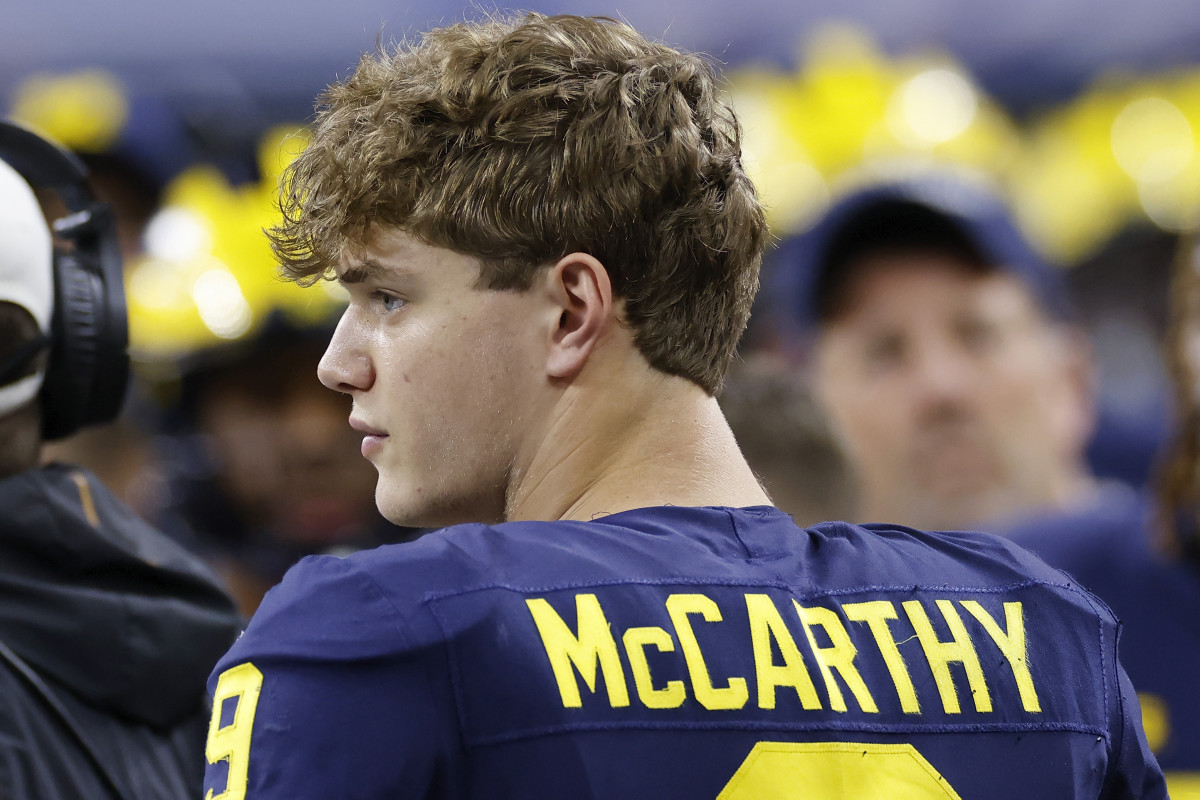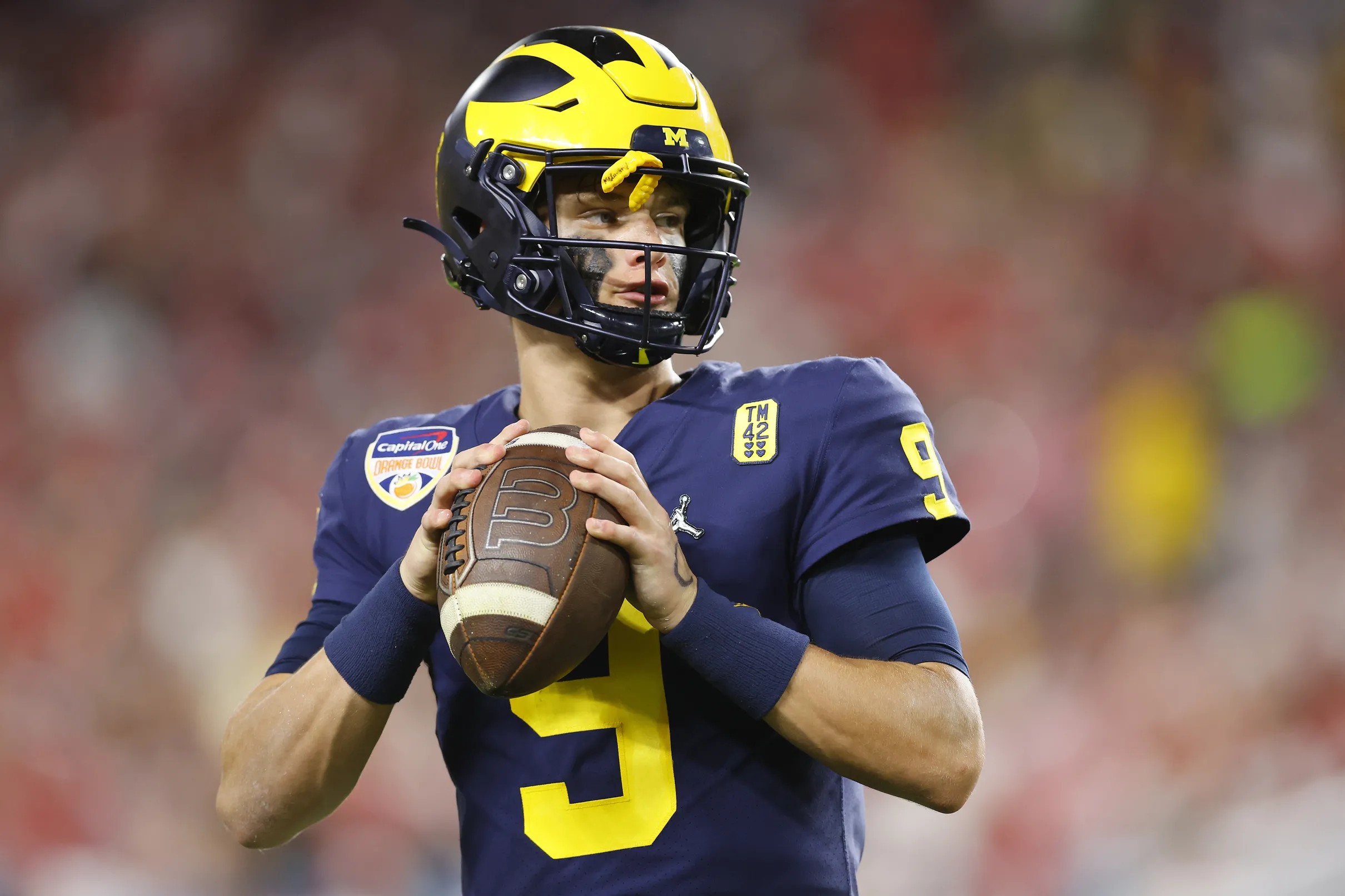JJ McCarthy’s Injury and Recovery

JJ McCarthy, the talented quarterback for the University of Michigan Wolverines, suffered a significant knee injury during the 2023 season. This setback raised concerns about his availability for the upcoming season and sparked widespread interest in his recovery process.
The Nature of JJ McCarthy’s Knee Injury
JJ McCarthy sustained a torn ACL (anterior cruciate ligament) in his left knee during a game against the Penn State Nittany Lions. This injury is a common occurrence in contact sports, particularly football, and involves a complete or partial tear of the ACL, a crucial ligament that provides stability to the knee joint. The injury typically occurs when the knee is twisted or hyperextended, often resulting in immediate pain and swelling.
Timeline of JJ McCarthy’s Injury, Surgery, and Rehabilitation
- Injury: JJ McCarthy suffered the ACL tear during the Michigan-Penn State game on October 21, 2023.
- Surgery: McCarthy underwent successful ACL reconstruction surgery in November 2023. This procedure involved repairing the torn ACL with a graft taken from another part of his body, typically the hamstring or patellar tendon.
- Rehabilitation: McCarthy began a rigorous rehabilitation program immediately after surgery, focusing on regaining strength, flexibility, and range of motion in his knee. This process typically involves physical therapy sessions, exercises, and gradually increasing activity levels.
The Specific Surgical Procedure Performed
The surgical procedure used to repair JJ McCarthy’s torn ACL is known as ACL reconstruction. During this procedure, a graft is harvested from another part of the body and used to replace the torn ACL. The graft is secured to the femur (thigh bone) and tibia (shin bone) using screws or other fixation devices. The specific graft type and surgical technique used can vary depending on factors such as the patient’s age, activity level, and the severity of the injury.
Expected Recovery Timeframe and Potential Complications
The recovery process for an ACL reconstruction typically takes 9 to 12 months. This timeframe is influenced by various factors, including the individual’s age, fitness level, and adherence to the rehabilitation plan. During the initial weeks and months, focus is placed on reducing swelling, regaining range of motion, and strengthening the surrounding muscles. As recovery progresses, the emphasis shifts to regaining balance, coordination, and functional mobility.
Potential complications associated with ACL reconstruction surgery are relatively uncommon but can include:
- Infection: This is a risk with any surgery, but proper hygiene and antibiotic use can help minimize this risk.
- Blood clots: These can form in the legs after surgery and may require additional treatment.
- Graft failure: While uncommon, the graft can sometimes fail to heal properly, requiring further surgery.
- Joint stiffness: This can occur if the knee is not adequately mobilized during the rehabilitation process.
- Re-injury: It’s crucial to follow the rehabilitation plan and gradually increase activity levels to minimize the risk of re-injury.
Rehabilitation Plan and Physical Therapy Protocols
The rehabilitation plan for an ACL reconstruction typically involves several phases:
- Initial Phase (Weeks 1-6): This phase focuses on reducing pain and swelling, regaining range of motion, and promoting healing. Activities may include:
- Ice therapy
- Elevation
- Gentle range of motion exercises
- Quadriceps and hamstring strengthening exercises
- Intermediate Phase (Weeks 6-12): This phase emphasizes increasing strength, flexibility, and balance. Activities may include:
- Proprioceptive exercises (exercises that challenge balance and coordination)
- Strengthening exercises using resistance bands and weights
- Light plyometrics (jumping exercises)
- Advanced Phase (Weeks 12-24): This phase focuses on returning to functional activities and sports. Activities may include:
- Progressive running
- Agility drills
- Sport-specific training
Impact on Michigan Football

JJ McCarthy’s knee injury undoubtedly cast a shadow over the Michigan Wolverines’ season, raising concerns about their ability to maintain their dominant form. The team’s performance before and after the injury provides valuable insights into the impact of his absence.
Performance Before and After the Injury
The Wolverines were a force to be reckoned with before McCarthy’s injury. They were undefeated and ranked among the top teams in the nation, showcasing their offensive prowess and a strong defense. However, the absence of their star quarterback, who was responsible for a significant portion of their offensive production, had a noticeable impact. The team struggled to maintain their offensive consistency and faced a series of close games, highlighting the importance of McCarthy’s leadership and playmaking abilities.
Role of Backup Quarterbacks
With McCarthy sidelined, the responsibility fell upon the backup quarterbacks to step up and fill the void. While they showed glimpses of potential, their lack of experience and familiarity with the offense proved to be a significant hurdle. The team’s offensive scheme, heavily reliant on McCarthy’s skills, was not as effective with the backup quarterbacks, resulting in a decline in overall offensive production.
The Team’s Strategy for Managing the Quarterback Position
The Wolverines adopted a cautious approach to managing the quarterback position during McCarthy’s absence. They opted for a conservative game plan, relying more on their running game and defense to secure wins. This strategy, while effective in some games, limited their offensive potential and put a strain on the defense to carry the load.
Potential Impact of McCarthy’s Return
McCarthy’s return is anticipated to be a game-changer for the Wolverines. His presence will undoubtedly inject a much-needed boost into their offense, bringing back the dynamism and playmaking ability that was missing during his absence. The team’s offensive scheme is designed to capitalize on his strengths, and his return is expected to unlock the full potential of the Wolverines’ offense.
McCarthy’s Career Outlook: Jj Mccarthy Knee Surgery

JJ McCarthy’s knee surgery, while a setback, doesn’t necessarily spell the end of his promising football career. He’s already shown flashes of brilliance, and with proper recovery and development, he could become a dominant force in the NCAA and beyond.
McCarthy’s Potential as a Quarterback
McCarthy possesses the talent and potential to become a top-tier quarterback. His ability to read defenses, make accurate throws, and extend plays with his mobility sets him apart from many young quarterbacks. He’s shown a knack for making big plays in crucial moments, and his confidence on the field is infectious.
Strengths and Weaknesses
- Strengths: McCarthy’s athleticism and ability to make plays outside the pocket are undeniable. He has a strong arm and can deliver the ball with accuracy, even on the run. His decision-making has also shown improvement, and he’s capable of reading defenses effectively.
- Weaknesses: McCarthy’s biggest weakness is his tendency to force throws, sometimes leading to interceptions. He needs to refine his decision-making and learn to take what the defense gives him.
Comparison to Other Young Quarterbacks
McCarthy’s talent and potential are comparable to other young quarterbacks in the NCAA, such as Caleb Williams (USC) and Drake Maye (North Carolina). These quarterbacks have shown similar abilities and are considered potential future stars in the NFL.
Expert Opinions on McCarthy’s Future in the NFL, Jj mccarthy knee surgery
“McCarthy has all the tools to be a successful NFL quarterback. He has the arm talent, the athleticism, and the intelligence. He just needs to continue to develop and improve his decision-making.” – [Expert Name], former NFL quarterback
Potential Timeline for McCarthy’s Career Development
McCarthy’s recovery from the knee surgery will be crucial in determining his timeline. However, assuming a successful recovery, a potential timeline for his career development could look like this:
- Year 1: Return to full strength and regain his pre-injury form. Focus on developing his game within the Michigan offense.
- Year 2: Establish himself as a dominant force in the NCAA, leading Michigan to a successful season.
- Year 3: Enter the NFL Draft and become a high-round pick, with the potential to start early in his career.
Jj mccarthy knee surgery – JJ McCarthy’s knee surgery has been a hot topic among fans, with many wondering about its impact on his career. The severity of the injury and the timeline for recovery are crucial factors in determining how this setback will affect his future.
To learn more about the specifics of his surgery and the potential implications for his career, you can read more about it here. It remains to be seen how this surgery will ultimately impact JJ McCarthy’s career, but fans and analysts alike are closely watching his progress.
JJ McCarthy’s knee surgery was a significant setback for the young quarterback, but it’s a reminder that injuries are a part of the game. The Minnesota Vikings, a team known for their resilience , have faced their share of adversity over the years.
With a strong support system, McCarthy can draw inspiration from the Vikings’ history of overcoming challenges and hopefully return to the field stronger than ever.
